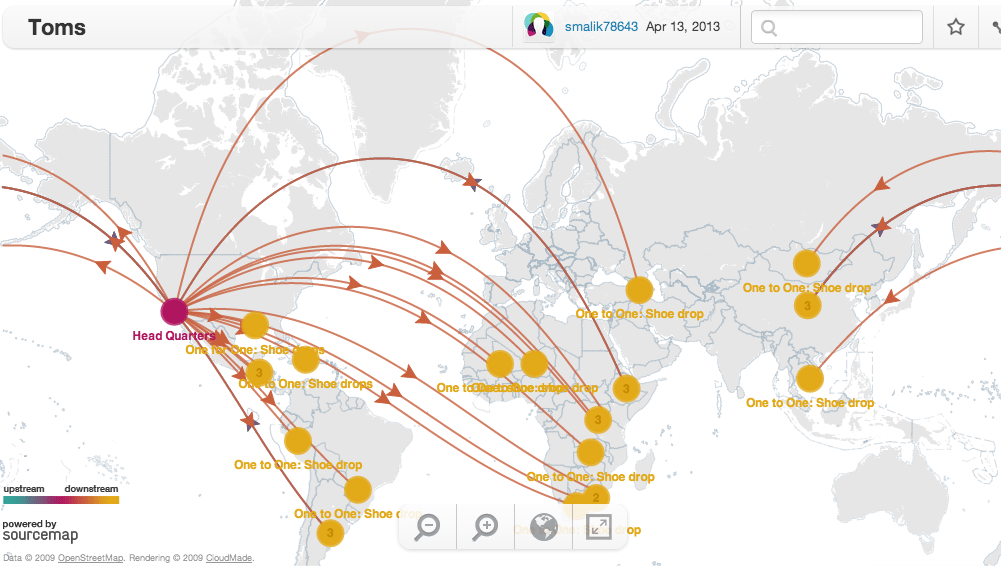Transparency: a Mission and a Challenge
If you’ve been living under a Fairphone-less rock: Fairphone’s mission is to change the relationship between people and their products, and our vision is an economy based on fairer principles. We’ve chosen to achieve this by making a phone, because we believe that by opening up the supply chain, we can understand it and start putting different values first. This requires, above all, transparency. We need it to, among other things, track and trace minerals, obtain an insight into production practices and create clear deals.
In this blog post, I want to share my concept of what transparency is and see what it means for working in a business. We’ve received a number of requests for communication milestones like our cost price breakdown, so I’d like to set some dates so that you know when to expect these.
As you know, our team works with a community of people who together shape what we hope will become a movement for change. The essential ingredient of transparency in this journey helps us show how the industry works, how decisions are made, what we can and what we can’t achieve and why. It paves the way to share best practices. But we have also encountered our first conundrum: How can we be transparent about our daily business operations and meanwhile maintain a professional image of our brand and company?
To lay it out for you in simple terms, delivering a high quality product is crucial to carrying our story beyond the first Fairphone. If we want to «raise the bar for the industry» we need to play on a par with them. If we don’t deliver, we won’t be taken seriously as an alternative. By «playing» in the field, I don’t mean in terms of showcasing the latest technology, I mean that we need to make sure that the functionality of the phone doesn’t take away from the message that we can put social values first in production. Because in the end, the phone is as much a means to an end as an alternative in the smartphone market.
In managing the balance between how we communicate our internal business dealings with our community, we’ve come across a number of practical and difficult questions: What do we define under transparency? How far do we go and what is considered effective? Will our transparency about our story affect the way our customers see our product? We talk about these things internally and it’s always an important discussion. One thing we all agree on is that it should be relevant to our mission of opening up the supply chain and that we cannot undermine the integrity of our partners. So, to make sure we’re on the same page, I want to share with you a specific number of upcoming communication events that will act as markers of transparency in the coming months.
Transparency falls into a few (big) categories:
- We need to create as much of it (transparency!) as we can in the supply chain, so that we can track and trace materials, and so that companies and consumers know where their stuff comes from. Only when we know this can we start talking about conflict-free and Fairtrade goods. We are working on a source map and have published a constantly growing list of our suppliers.
![Source Map: Toms]()
The next step on the horizon is a Life Cycle Assessment (LCA) once the phone is here.
- We want people to get a better insight into the production practices, working conditions, working hours and health and safety regulations involved in the products they use and buy. Therefore, we’ve found an independent, third-party organization to perform a social assessment to take place at the factory in August (an entire blog post on that to come soon). Given the media interest in the assembly process, our production partner A’Hong has agreed to allow film crews to cover this. We’re also thinking of ways to get our customers closer to the production process, so expect some opportunities for community engagement in the next few months.
- We want to show you how companies function, that is: where does your money go? For this we will be publishing a cost price breakdown per handset. This means a current expectation of our costs for this year based on the production of 20,000 phones. This has been a goal of ours from the beginning, but it has taken us time to confirm information with our partners, and their partners (yes, it’s a big system!), to get all the relevant information together. It’s not easy to put all our initiatives into a number, so that also takes some time, but we’re getting close. We expect to publish this detailed cost breakdown in late August (just before our prototype arrives from China and we send it to the lab for testing and make it available for reviews).
- We will share much of our production planning to give an insight into what’s involved in setting up the ecosystem to source materials and components, produce a phone, transport it, repair it (if necessary) and recycle it. The main difference with many other companies is that we’ve already sold our phones, which is good, because it gives you a clear place in the ecosystem and gives us a responsibility to real, existing customers that we like to talk to (Hi there!).
Looking ahead
Our aim is to give consumers as much access and insight into the processes behind the production of their devices so that they can form new relationships with the things they own. I’ve already heard people say that they feel more connected to their Fairphone, even before they’ve been able to use it. From the communications team, I can tell you that this is extremely rewarding! Where communications is usually a supporting department, we feel that our role at Fairphone is to build bridges so that companies meet customers and vice versa.
We need to keep the push and pull alive; it’s the balancing act between telling the story and moving toward our greater goal of changing systems – while making sure you have a product and a team that you believe in.
It’s when we achieve this synergy that we can show that companies can be different and hopefully take our place on the world stage. Thanks for continuing to follow along with us on this exciting journey.




